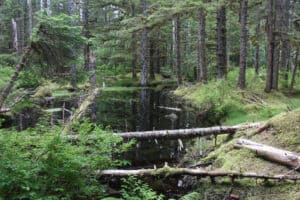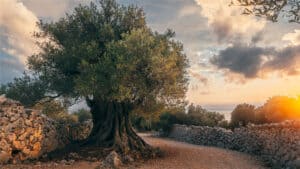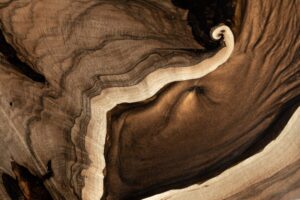Imagine trees so tall that the biggest dinosaurs could only reach a third of their height. Such staggeringly tall trees are still alive today. Sequoias and Douglas firs are the descendants of those ancient conifers that dominated the landscape in the Jurassic and Cretaceous Periods, and they survived the extinction of the dinosaurs. One of these magnificent trees is endangered, while the other is one of the most plentiful tree species in North America. And you can grow both in your yard . . . if it’s big enough. Here are some of the differences between these massive giants.
1. Size
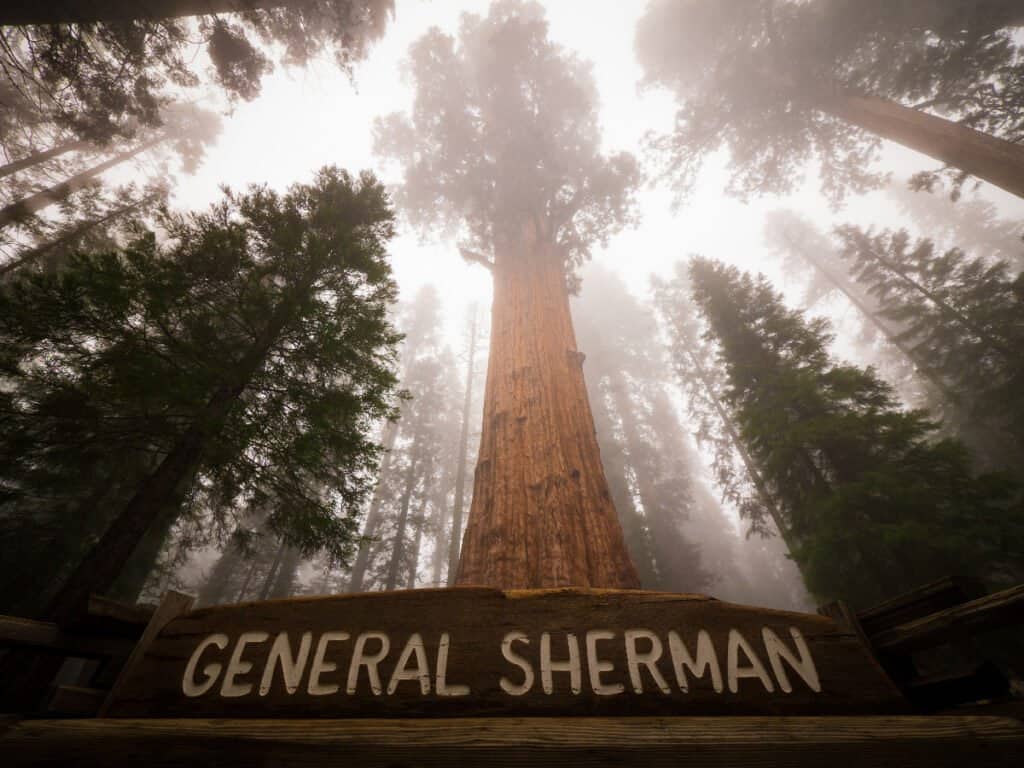
General Sherman is an unthinkably massive tree, the largest single living thing on the planet.
©zdenekkounovsky/Shutterstock.com
The largest Douglas firs reach 250 ft (76 m), while the tallest tree in the world today is a Sequoia known as the General Sherman tree that stands 275 ft (83 m) tall. Sequoias are also larger in diameter than Douglas firs. General Sherman is 36 ft (11 m) in diameter at its base. Douglas fir trunks are a comparably skinny 5-6 ft (1.5-1.8 m) across. If none of that impresses you, imagine this: Douglas fir bark can reach a whopping 14 in (35 cm) thick, approximately as wide as a laptop screen! But Sequoias? Their bark can grow to 3 ft (.9 m) thick – about the length of a baseball bat or as wide as a kitchen counter!
2. Lifespan
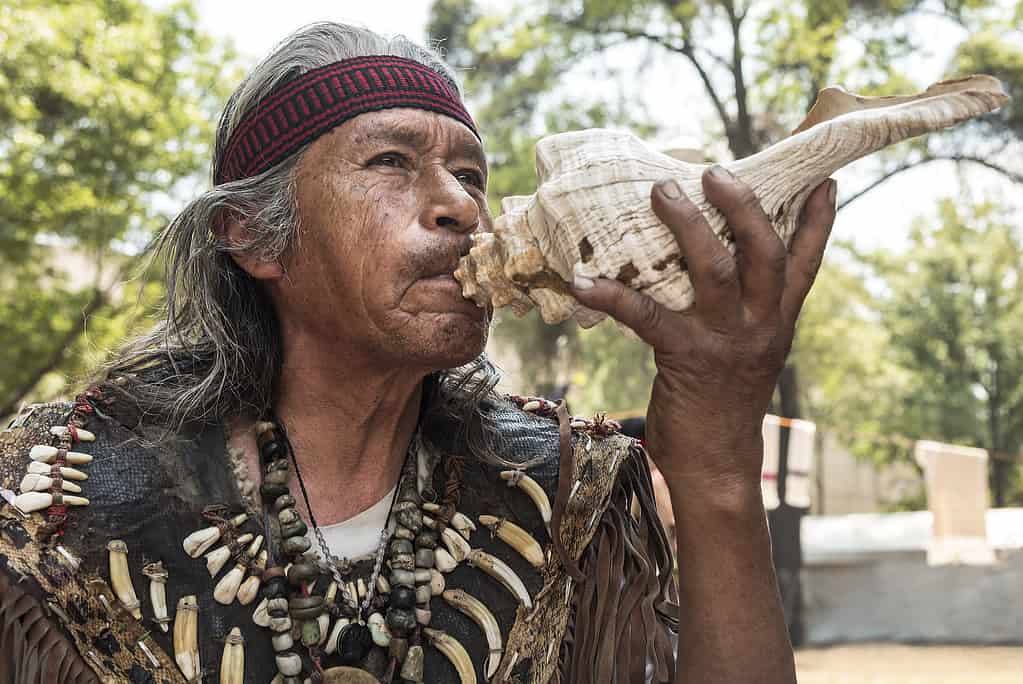
Human culture and technology have changed drastically in the lifespan of a single sequoia.
©mofles/iStock / Getty Images Plus via Getty Images
No one knows for sure what the maximum possible lifespan is of either of these species, but we do know how old the oldest specimens are today, and they are ancient. The oldest Douglas firs are about 1,300 years old. Those trees would have sprouted in AD 723. The city of Kathmandu, Nepal was newly founded. The Mayans had recently completed the first Tikal temple. And Muslims constructed the Al-Aqsa Mosque on the Jerusalem Temple Mount.
What about Sequoias? They’re more than twice as old, at 3,200 years! That takes us all the way back to 1177 BC. American archaeologist Eric H. Cline thinks that’s a pretty significant year. In his book 1177 B.C.: The Year Civilization Collapsed, he says multiple man-made and natural disasters ended the Bronze Age and caused ancient cultures like those of the Babylonians, Hittites, and Trojans to collapse. But that didn’t phase the Sequoias.
3. Range
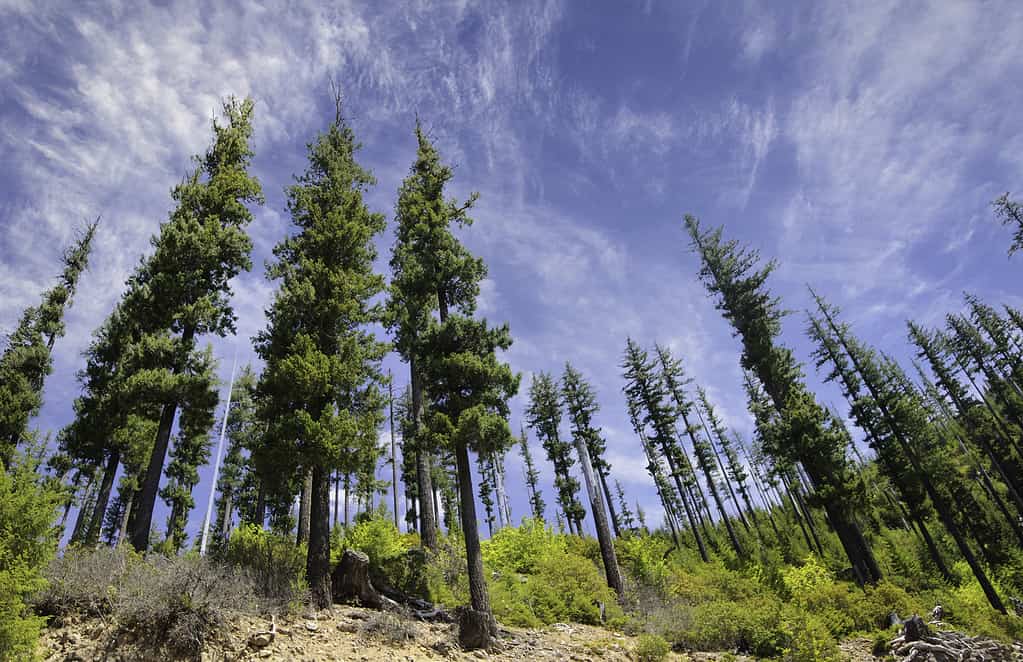
Douglas firs are one of the most plentiful trees in the American West.
©Hugh K Telleria/Shutterstock.com
Douglas firs are plentiful, and their numbers are expanding, unlike other widespread evergreen species in the American West. They have a broad range in North America, as they can tolerate some variation in their habitat. They’re plentiful in British Columbia and Alberta, in the U.S. Pacific, Mountain, and Southwestern states as far as West Texas, and through northern Mexico. They have also been introduced to France, Germany, the United Kingdom, South Africa, Australia, and New Zealand. They have become an invasive species in southern Argentina and Chile. Needless to say, they are not endangered.
Sequoias, in contrast, are an endangered species. Only about 80,000 specimens survive in about 80 groves in California, mixed with other tree species. They live just on the west slope of the Sierra Nevada Mountains at an elevation of 5,000 to 7,000 feet. They need the alternating wet and dry seasons and occasional forest fires to help dry out their cones and release seeds. Sequoias have been planted as ornamental specimens around the world by private citizens and organizations. For example, the Disney Sequoia Lodge at Disneyland Paris is planted in a grove of pine and Sequoia trees to give Europeans a taste of the West.
4. Commercial Uses
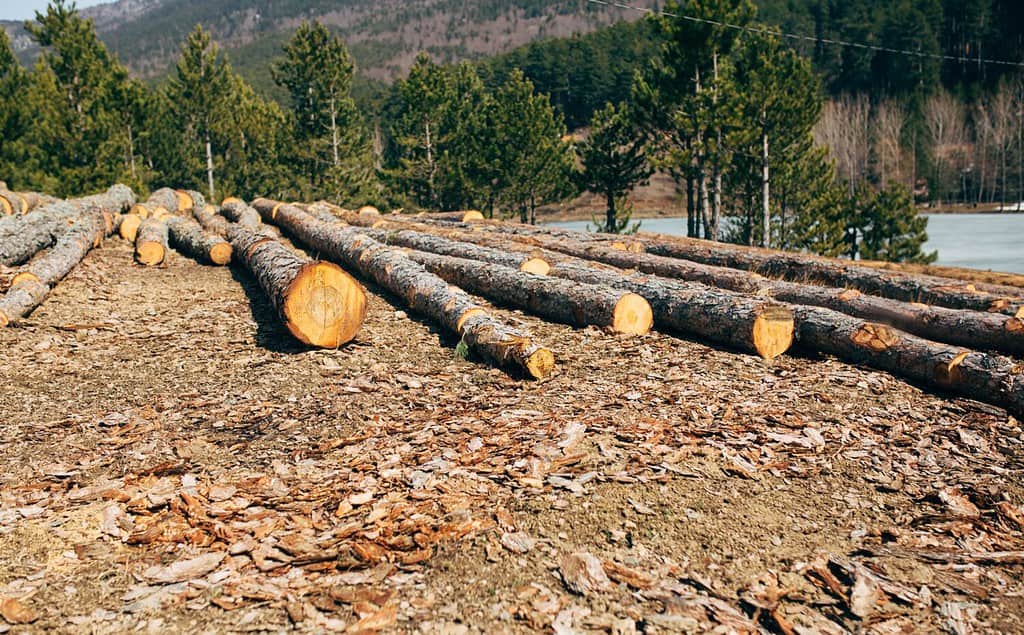
The U.S. timber industry produces $300 billion in products a year and employs over one million people.
©Olenaduygu/Shutterstock.com
Douglas firs are the most valuable commercial tree species in the United States. Roughly 4.7 billion feet a year are harvested, making up 75% of the country’s wood harvests. They grow fast; the wood is strong and suitable for tall utility poles and durable railroad ties. Hundreds of patented items are made from the crushed and processed bark, which can be used as a replacement for expensive natural cork. Douglas fir wood is frequently used in the manufacture of doors and windows, furniture, cabinetry, and boats. They are also popular choices as Christmas trees.
Sequoia wood has far less commercial use, as it splinters badly. Loggers tried digging enormous trenches and filling them with tree branches to cushion the trunks of trees as they fell. Nevertheless, they still were only about to harvest about 50% of the wood for substantial projects. That didn’t prevent them from continuing to cut the massive trees for roofing shingles, fence posts, and matchsticks. Public outcry ended these harvests in the 1920s. Today, Sequoias generate more revenue as living species, in tourism to Sequoia National Park and as ornamental landscaping specimens.
5. Growth Requirements
Douglas firs can be grown in USDA Plant Hardiness Zones 1-10, 14-17. If you plant one in your yard, put it in full sun but sheltered from wind until it takes firm root. The soil should be deep and well-aerated. They don’t do well in dense clay soils. Keep it moist but not waterlogged. The tree should grow at a rate of 1-2 ft (.3-.6 m) per year. Remember that its ultimate spread will be 15-25 ft 4.6-7.6 m), so give it the space it needs.
Sequoias will ultimately have an even wider spread of 25-35 ft (7.6-10.6 m). If you live in hardiness zones 5-8 you can plant one but protect it from temperature extremes. They can’t survive sustained temperatures outside the range of -12 – 104 °F (-24.4 – 40°C). These big boys are food and water hogs! They need deep, fertile, well-drained, nitrogen-rich sandy loam. Sequoias need more water than any other tree. In the summer a full-grown Sequoia soaks up 500-800 gallons (1893-3028 liters) of water! Compare that to the 300 gallons (1135 liters) an average U.S. home uses for all other purposes. These resource requirements are part of the reason sequoias are so much rarer than other western tree species. If you plant one, keep it moist but not waterlogged, and never let it dry completely out.
Why Are Seedlings Cheap?
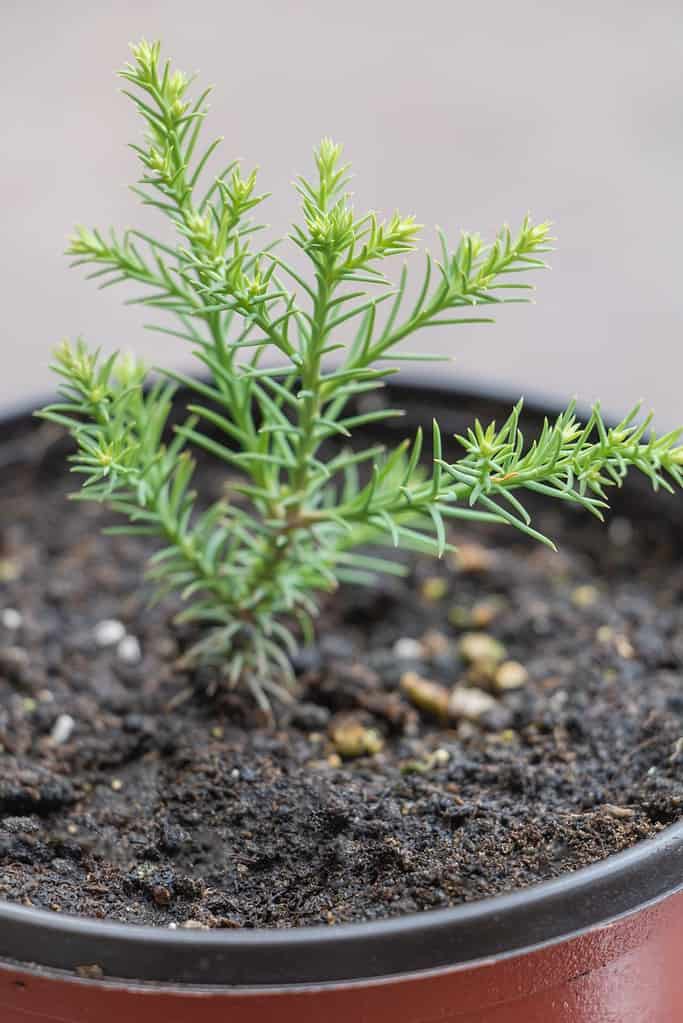
This is what a cute ‘lil baby sequoia looks like.
©Gheorghe Mindru/Shutterstock.com
Surprisingly, even though Sequoias are endangered species you can order small seedlings online for under $10, the same as the cost of a Douglas fir seedling. Each Sequoia tree can produce 400,000 seeds a year, so there is no shortage of seeds. It is this tree’s resource requirements and low commercial value to the timber industry that prevent it from being mass-planted.
Although the destruction of forests is a disaster for wildlife living there, it is worth noting that since the 1930s, the timber industry has replanted more trees every year than they cut down. Over the last century, the number of trees has increased about 400% to a total of 228 billion. But we’re not finished yet. We’re just waiting for you to plant a Sequoia for 160 generations of your descendants to enjoy.
Summary of Douglas Firs and Sequoias
| Characteristic | Douglas Fir | Sequoia |
|---|---|---|
| Scientific Name | Pseudotsuga menziesii | Sequoiadendron giganteum |
| Namesake | David Douglas, botanist | Cherokee Chief Sequoya |
| Height | 250 ft (76 m) | 275 ft (84 m) |
| Spread | 15-25 ft 4.6-7.6 m) | 25-35 ft (7.6-10.6 m) |
| Trunk diameter | 5-6 ft (1.5-1.8 m) | 36 ft (11 m) |
| Bark thickness at the base | 14 in (35 cm) | 3 ft (.9 m) |
| Growth rate | 1-2 ft (.3-.6 m) per year | 2 ft (.6 m) per year |
| Root system | 10 ft (3 m) deep taproot | 6-12 ft (1.8-3.6 m) deep, no tap root |
| Reproduction | Winged seeds in cones 2-4 (5-10 cm) long, which may travel up to 1,320 ft (402 m) from the tree. | Winged seeds in cones 1.5-3 in (7 cm) long. A tree can produce 300-400,000 seeds a year that fly 590 ft (180 m) away. |
| Lifespan | 1,300 years | 3,200+ years |
| Native range | Idaho, Montana, Wyoming British Columbia, Alberta | California, West slope of the Sierra Nevadas. |
| Commercial uses | doors, windows, flooring, furniture, cabinets, fences, poles, boats, Christmas trees | Tourism, landscaping (until 1924: shingles, fence posts, match sticks) |
| Conservation status | Least Concern | Endangered |
| Population | Hundreds of millions. | Less than 80,000 |
| Growth zones | Zones 1-10, 14-17 | Zones 5-8 |
| Temperature | 41-90 ℉ (5-32 ℃) | -12 – 104 °F (-24.4 – 40°C) |
| Soil | Deep, well-aerated | Deep, fertile, well-drained, nitrogen-rich sandy loam |
| Light | Full to partial sun | Full to partial sun |
| Water | Moist but not soggy | Drinks lots of water, but don’t let it stay waterlogged |
| Fertilizer | Does not need a lot of fertilizer | Needs a lot of nutrients from a well-balanced, low-salt fertilizer |
The photo featured at the top of this post is © IM_photo/Shutterstock.com
Thank you for reading! Have some feedback for us? Contact the AZ Animals editorial team.




